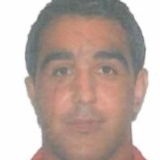
Navid Nikraz
Work place: Faculty of Science and Engineering, Curtin University, Perth, WA 6102, Australia
E-mail: navid.nikraz@curtin.edu.au
Website:
Research Interests: Computational Science and Engineering, Computational Engineering, Engineering
Biography
Navid Nikraz: obtained his B. Eng (Electrical) B. Comm degrees from UWA in 2005 and went on to complete his PhD in Electrical Engineering at UWA in 2008. He commenced his role as a Senior Lecturer at Curtin University in 2010 and currently supervises 3 PhD and 3 M. Phil students. His current research interests include: Asset Management, Options Analysis, Project Feasibility, Linear/Non-linear state space observation and power system protection.
Author Articles
Proposing Two Defuzzification Methods based on Output Fuzzy Set Weights
DOI: https://doi.org/10.5815/ijisa.2016.02.01, Pub. Date: 8 Feb. 2016
Defuzzification converts the final fuzzy output set of fuzzy controller and fuzzy inference systems to a significant crisp value. However, there are various mathematical methods for defuzzification, but there is not any certain systematic method for choosing the best strategy. In this paper, first we explain the structure of a fuzzy inference system and then after a short review of defuzzification criteria and properties, the main classification groups of most widely used defuzzification methods are presented. In the following after discussing some existing techniques, two new defuzzification methods are proposed by presenting their general performance and computational formulas. However, the principle of these two methods is using weights associated with output fuzzy set like WFM or QM, but unlike the existing approaches, they consider the final aggregated consequent and implicated functions simultaneously to calculate the weights. To show how the proposed methods act, two numerical examples are solved using the presented methods and the results are compared with some of common defuzzification techniques.
[...] Read more.Other Articles
Subscribe to receive issue release notifications and newsletters from MECS Press journals